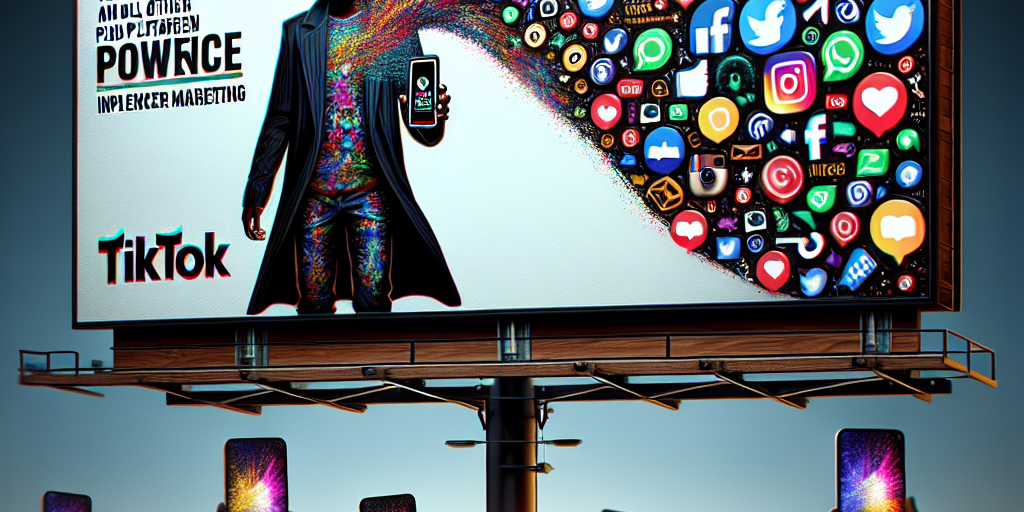The Power of TikTok and Other Platforms in Influencer Marketing
In the rapidly evolving landscape of digital marketing, a significant revolution has been taking place over the past decade: the rise of influencer marketing. This phenomenon, characterized by leveraging individuals with substantial social media followings to promote products and services, has transformed how brands connect with audiences. Among the myriad social media platforms, TikTok has emerged as a powerhouse, wielding unprecedented influence. Alongside other platforms such as Instagram, YouTube, and emerging platforms like Twitch and Clubhouse, TikTok is reshaping the very fabric of modern marketing strategies.
The Meteoric Rise of TikTok
Launched globally in 2018, TikTok has quickly risen to prominence with its unique format of short, engaging videos. As of 2023, it boasts over 1 billion active users worldwide. TikTok’s algorithm is particularly adept at pushing content to the right viewers, whether through curated "For You" pages or trending hashtags. This precise targeting makes it an ideal platform for influencer marketing.
TikTok’s appeal lies in its authenticity. Unlike the often-filtered realms of Instagram, TikTok thrives on spontaneity, creativity, and relatability. Users, particularly Gen Z and Millennials, resonate with content that feels genuine rather than staged. Influencers on TikTok create a blend of entertainment and advertisement that feels seamless, making endorsements appear more natural and trustworthy.
Key Strategies for TikTok Influencer Marketing
-
Hashtag Challenges: Brands create challenges that encourage users to create content around a specific hashtag. This strategy can lead to virality, as users become active participants in the marketing campaign.
-
Branded Effects: Leveraging TikTok’s AR effects, brands can introduce filters, stickers, and animations that users can incorporate into their videos, creating organic brand engagement.
-
Collaborations and Duets: Collaborating directly with popular TikTok influencers or encouraging them to "duet" with brand videos can amplify reach and engagement.
- Storytelling: Influencers often weave brand messages into their personal stories, presenting products in ways that align with their own lives and experiences. This narrative approach enhances relatability and trust.
The Power of Instagram and YouTube
While TikTok may be a current sensation, Instagram and YouTube remain cornerstones of influencer marketing. Each platform offers unique advantages:
-
Instagram:
- Visual Appeal: Instagram’s focus on high-quality images and videos allows brands to create visually appealing content.
- Stories and Reels: Features like Stories and Reels offer dynamic ways to share fleeting, yet engaging content, perfect for product teases or behind-the-scenes looks.
- Shoppable Posts: Instagram’s e-commerce integrations enable influencers to drive direct sales through shoppable posts and swipe-up links in stories.
- YouTube:
- Long-Form Content: YouTube excels in longer, more in-depth content. This is ideal for product reviews, tutorials, and vlogs that provide comprehensive insights.
- Monetization and Sponsorships: YouTube’s revenue-sharing model supports influencers in creating sustained content, often translating to more mature and diversified audiences.
- SEO Benefits: YouTube videos can rank in Google search results, offering lasting visibility beyond the viral lifespan of a post.
Emerging Platforms
-
Twitch: Primarily a gaming platform, Twitch is gaining traction in influencer marketing, particularly within the gaming and tech industries. Live streaming offers real-time interaction, adding an element of immediacy and authenticity.
- Clubhouse: As an audio-only platform, Clubhouse offers a different angle, focusing on discussions, interviews, and live Q&A sessions. It creates space for reflective thought leadership and nuanced conversations, positioning influencers as experts in their fields.
The Synergy of Multi-Platform Campaigns
One of the most effective strategies in influencer marketing today is leveraging a multi-platform approach. By tapping into the strengths of various platforms, brands can create a cohesive and expansive campaign. For instance, an influencer might introduce a product on TikTok with a catchy challenge, delve deeper into the product’s benefits on YouTube, and engage with followers through interactive Q&A sessions on Instagram Stories or live streams on Twitch.
Challenges and Considerations
Despite its many advantages, influencer marketing comes with challenges:
- Transparency: Ensuring that influencers clearly disclose sponsorships is crucial to maintaining trust and complying with regulations.
- Consistency: Managing consistent brand messaging across multiple influencers and platforms can be complex.
- Authenticity: The line between authentic content and overt advertisement can sometimes blur, potentially leading to audience skepticism.
Conclusion
The power of TikTok, alongside other influential platforms, lies in their ability to connect brands with highly engaged and receptive audiences. These platforms offer diverse tools and methods for creative expression, allowing influencers to craft authentic and impactful brand narratives. As the digital landscape continues to shift, the synergy between these platforms will undoubtedly continue to drive innovation in influencer marketing, making it an indispensable element of modern brand strategy.
In this dynamic digital era, the marriage of creativity and technology through influencer marketing not only captures attention but also fosters deep, meaningful connections between brands and their audiences.







